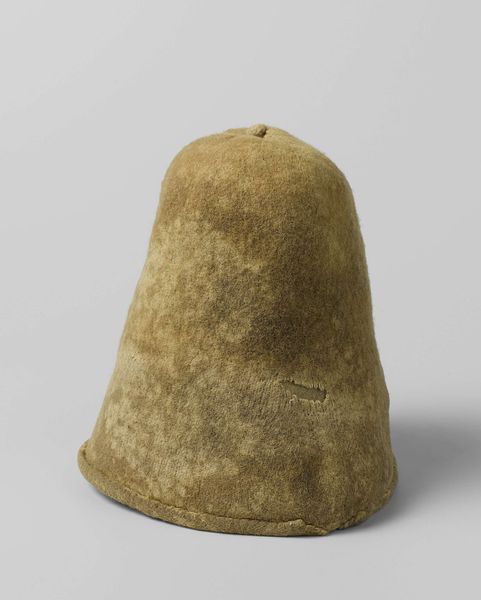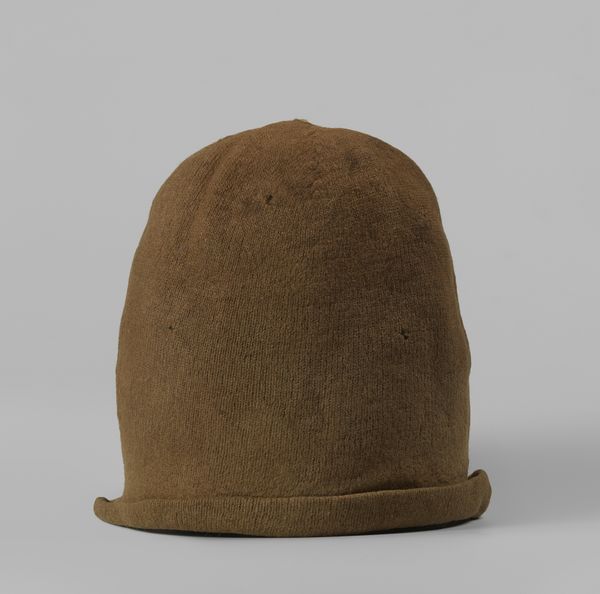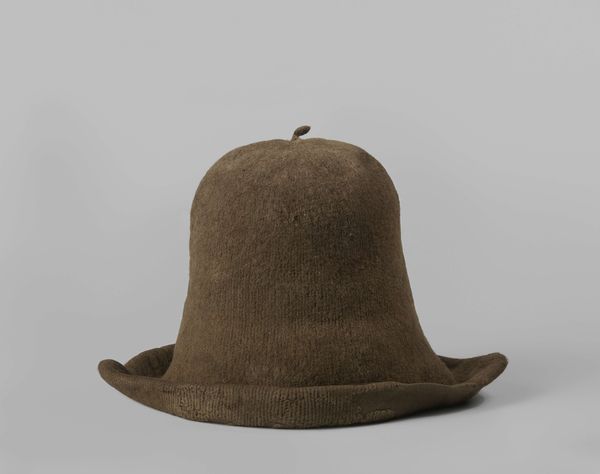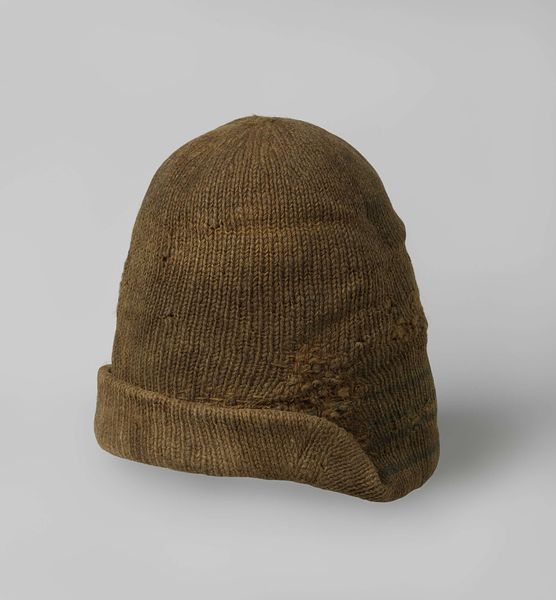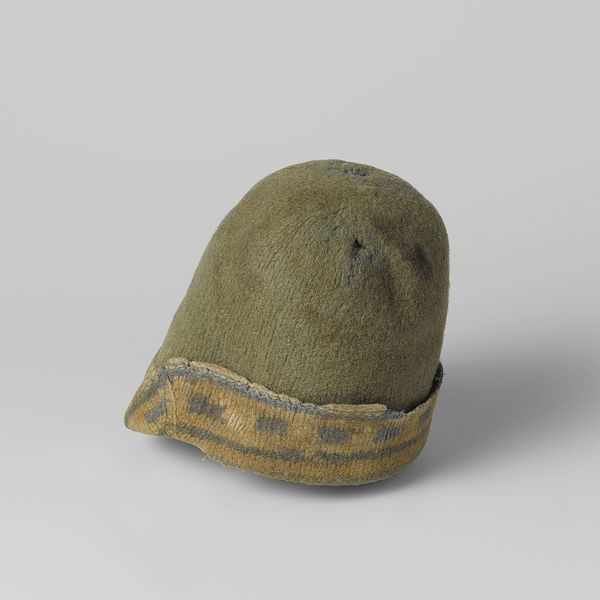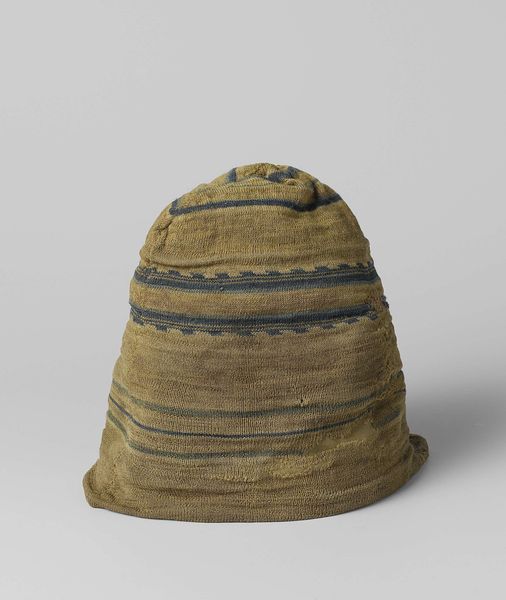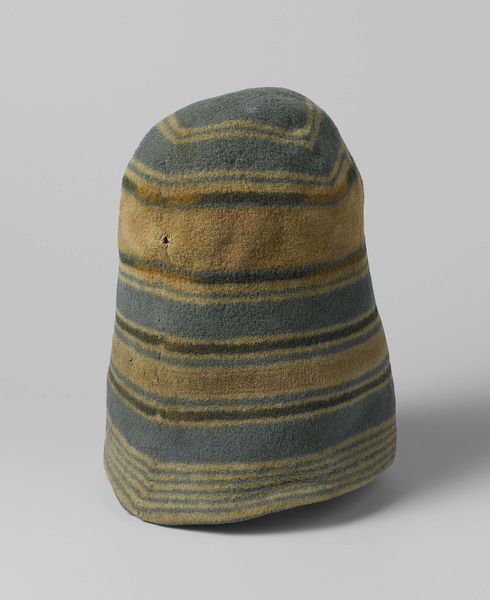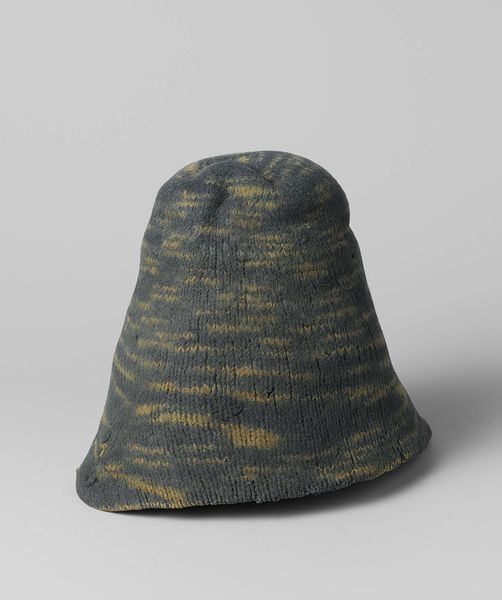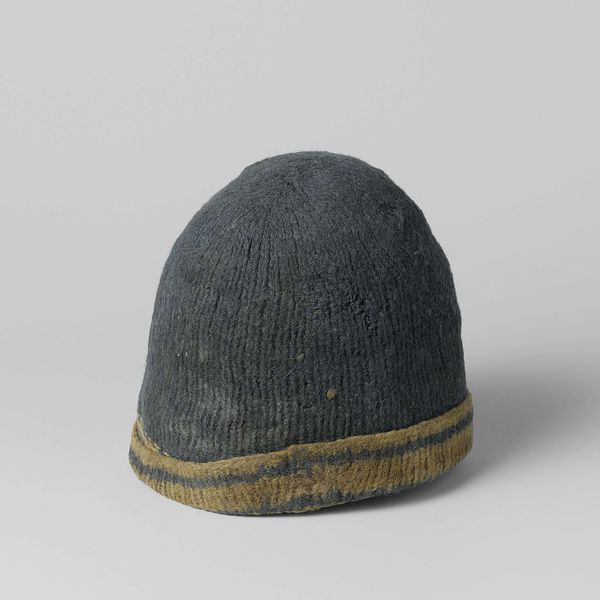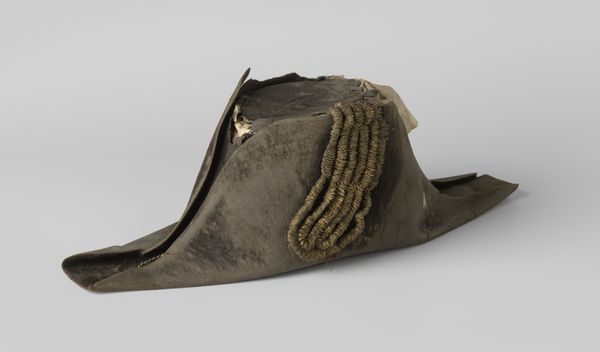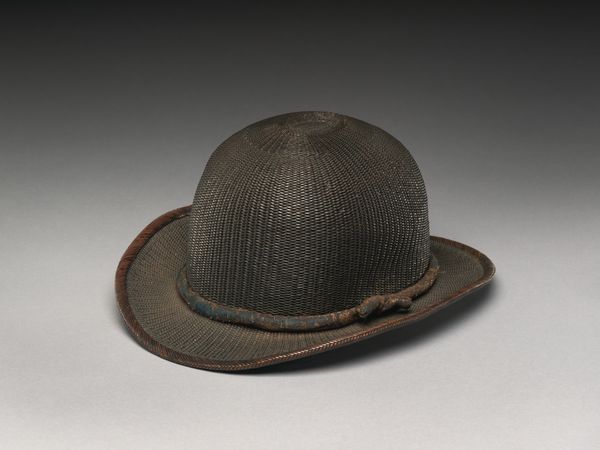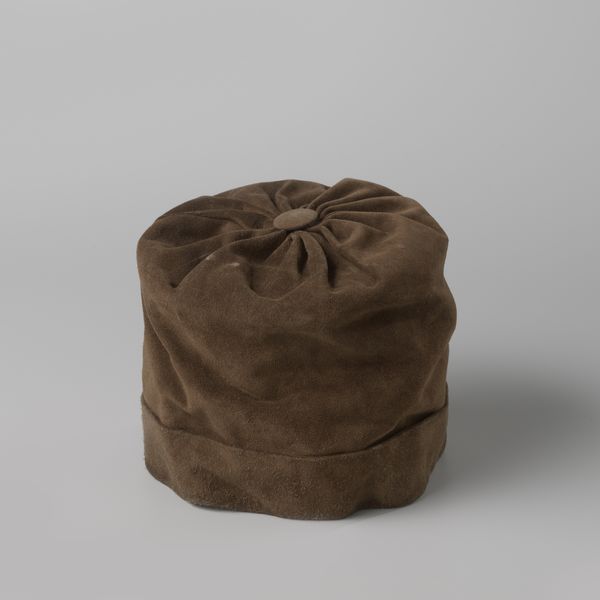
textile, photography
#
portrait
#
dutch-golden-age
#
textile
#
photography
#
folk-art
Dimensions: circumference 58 cm, height 27 cm
Copyright: Rijks Museum: Open Domain
These woollen caps were worn by Dutch whalers. Consider the cap not merely as headgear but as a vessel, much like the ships these whalers sailed. Woven from wool, it shields its wearer from the brutal cold, a small sphere of warmth against the vast, indifferent ocean. The form itself, simple and unadorned, echoes across cultures and epochs, from the Phrygian caps of antiquity, symbols of freedom, to the humble head coverings of laborers. This continuity speaks to a primal need for protection and belonging, a silent pact between the wearer and the elements. The whalers cap is a poignant reminder of humanity’s eternal negotiation with nature, a psychological bulwark against the abyss. We see these forms again and again across history, each time imbued with new yet familiar significance, a testament to the enduring power of symbols to bind us to our past.
Comments
rijksmuseum about 2 years ago
⋮
In 1980 archaeologists investigated the graves of 185 Dutchmen – whale hunters, and workers at whale oil refineries – who had died on or near Spitsbergen in the 17th century. Many skeletons were still wearing their knitted woollen head coverings. These caps were highly personal. The men were bundled up against the severe cold and could only be recognized by the colours and patterns of their caps. Presumably this is the reason why the caps went with them into their graves.
Join the conversation
Join millions of artists and users on Artera today and experience the ultimate creative platform.
